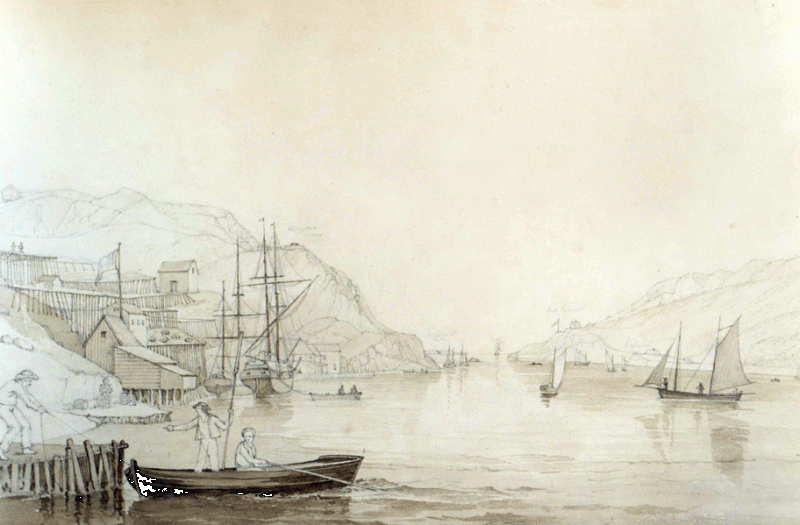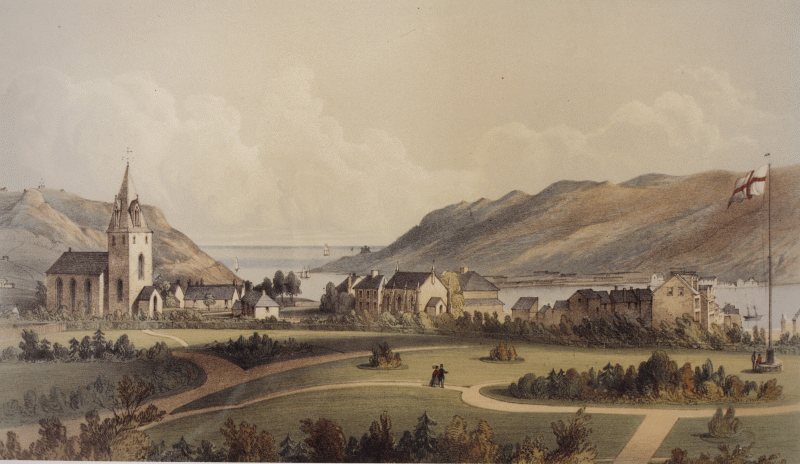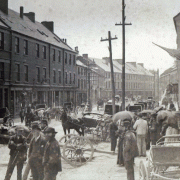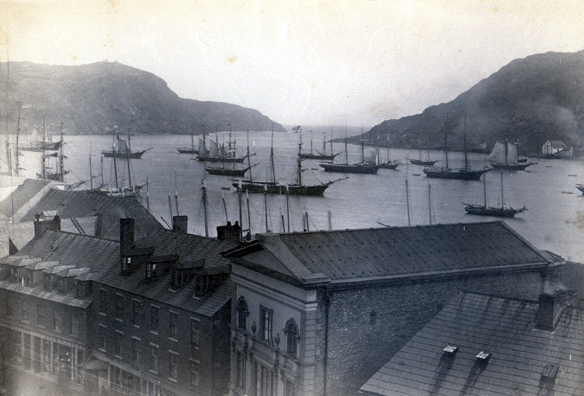History of St John’s
 The following is a very general overview of the history of St. John's. If you are looking for something more specific please contact the E-mail: archives@stjohns.ca.
The following is a very general overview of the history of St. John's. If you are looking for something more specific please contact the E-mail: archives@stjohns.ca.
St. John's, now the capital of the Province of Newfoundland and Labrador, has experienced a long and colourful history. Europeans began visiting this harbour during the latter part of the Italian renaissance period around the beginning of the sixteenth century. St. John's, because of its harbour and proximity to the fishing grounds, gained prominence as a commercial trading outpost for the Basques, French, Spanish, Portuguese and English engaged in the fishery along the western side of the North Atlantic.
The late sixteenth century saw the rise of Britain as a significant world naval power and with it, their dominant presence in the Newfoundland fishery, particularly in the area ranging from Cape Bonavista in the north to Cape Race in the south. St. John's recorded the first permanent settlers in this period in the early 1600s with a family named Oxford establishing a plantation, probably in the area west of Beck's Cove.

The north side of the harbour saw wharves, fish stores, and warehouses constructed to accommodate the trade which grew as a result of the fishery. A path which crossed the various streams and brooks running down the side of the hill connected these premises. This path later became known as the lower path and later still as Water Street - the oldest commercial street in North America. It was along this path that fishers, fishery servants, traders and their families along with fishing captains, pirates, traders and naval officers all travelled from storehouse to warehouse to alehouse to purchase or barter for the supplies necessary to secure a successful voyage during the Newfoundland fishery.
St. John's performed this role throughout the seventeenth and eighteenth centuries as the major commercial and service centre for the Newfoundland fishery. However, since Newfoundland functioned primarily as a fishery, as opposed to a place of residence, the population of St. John's increased slowly over most of this period.
The port's importance as a major part of the fishery made it a prime military target for any nation wishing to gain control over this important food supply. The earliest record of these battles dates back to 1555 when the Basques travelled overland to capture St. John's from the French. Over 100 years later, in June 1665, the great Dutch naval strategist Admiral De Ruyter captured St. John's from the Engl ish. Commencing in the late seventeenth century and running throughout most of the eighteenth century, the English and French engaged in a series of wars which saw St. John's used frequently as a battle ground. The last of these battles occurred in 1762 when the British recaptured St. John's from the French after a brief fight.
ish. Commencing in the late seventeenth century and running throughout most of the eighteenth century, the English and French engaged in a series of wars which saw St. John's used frequently as a battle ground. The last of these battles occurred in 1762 when the British recaptured St. John's from the French after a brief fight.
By the latter part of the eighteenth century, the population of St. John's stood at a few thousand based on its trade in the fishery. The outbreak of the Napoleonic Wars in 1791-2 in Europe saw a growth in the demand for salt fish. As prices for this commodity increased it attracted a large influx of people, mainly Irish immigrants who came to take advantage of the high fish prices and good wages. This resulted in a substantial increase in the population of St. John's which stood at approximately 10,000 by the end of these wars in 1815. The economic boom in the Newfoundland fishery ended with the  conclusion of the war. Fish prices fell and generally remained depressed until the outbreak of the First World War in 1914.
conclusion of the war. Fish prices fell and generally remained depressed until the outbreak of the First World War in 1914.
St. John's, now the commercial and political capital of Newfoundland grew slowly throughout the nineteenth century. Ravaged by three fires in 1816, 1846 and 1892, the town recovered and rebuilt after each fire.
Although originally proposed in 1832, the town of St. John's did not enjoy municipal government status until 1888 when it elected its first council consisting of five councillors and two government appointees. The population of the town at the time was approximately 30,000. The residents enjoyed electric street lights on the main roads and a public water supply although many registered complaints about inadequate sewage disposal facilities. Most of the city's downtown as bounded by Cookstown Road, Carters Hill, and Beck's Cove in the West and Harvey Road and Military Road in the North burned in the 1892 fire. By the turn of the century, public transit, in the form of electric street cars, picked up and dropped off passengers along Water Street, Adelaide Street, Queens Road, Rawlins Cross, and Military Road. These remained until replaced by buses in 1948.
 In 1921, St. John's became incorporated as a city with the passage of the City of St. John's Act by the Newfoundland government. Throughout the first half of the twentieth century it remained the centre of commercial trade in the Newfoundland fishery.
In 1921, St. John's became incorporated as a city with the passage of the City of St. John's Act by the Newfoundland government. Throughout the first half of the twentieth century it remained the centre of commercial trade in the Newfoundland fishery.
Today it remains the main financial and commercial centre for Newfoundland and Labrador and the capital of the province.
